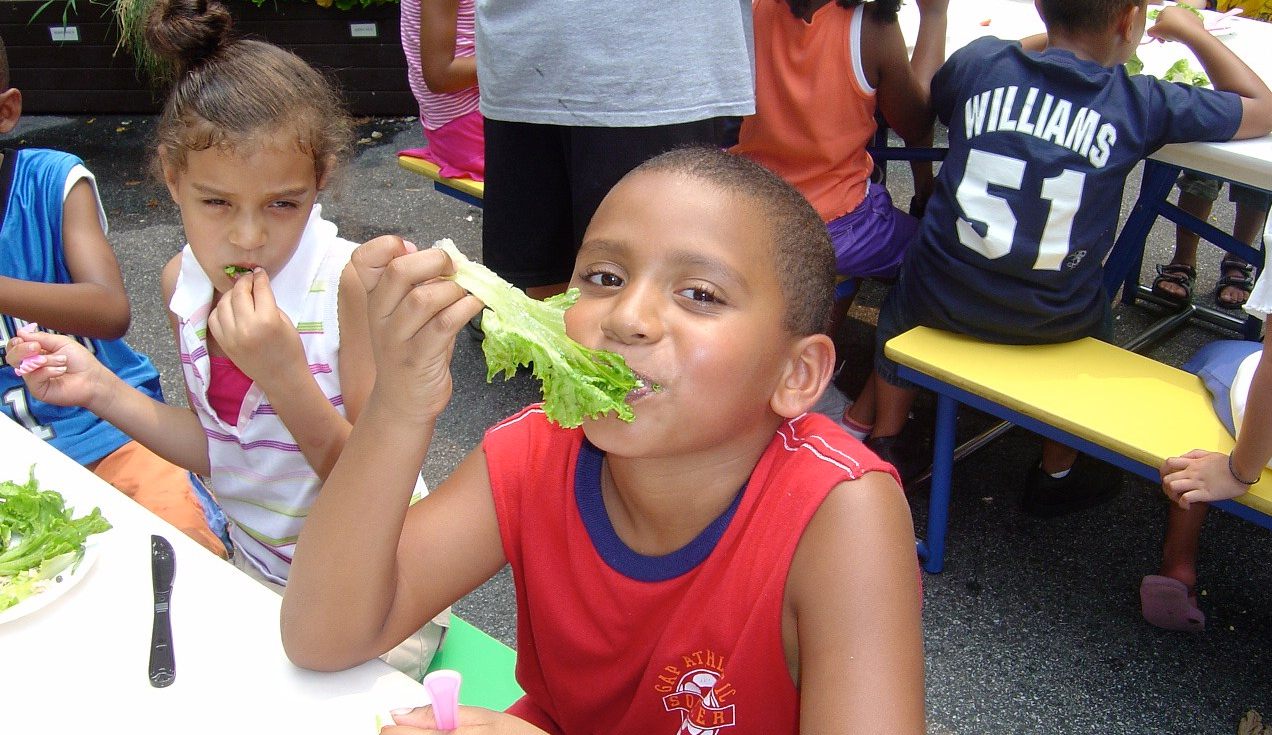Palate Development: A Driver of Behavior Change for Healthy Eating Patterns

This is the sixth article in a new series to illuminate key ‘drivers of behavior change’ around healthful eating. After 20 years of designing, evaluating and retooling curriculum to increase successful behavioral outcomes among all ages, we have identified 10 distinct behavior drivers. We are currently investigating these 10 drivers in a new study in collaboration with Columbia University’s Teachers College, Program in Nutrition. Our goal is to open a new area in the scientific literature that illuminates successful delivery and communication techniques. Over time as other practitioners and researchers add to this body of research, we can achieve consensus about what constitutes effective Teaching Kitchen curriculum.
When I first began disseminating ‘family cooking’ classes around the US in the late 90s, I always included what parents would consider ‘challenging’ recipes. As one client asked, “Thai Fish Chowder? Why aren’t we making mac ‘n cheese – something they like?” My answer: our class was education designed to develop their children’s palates to discover new flavors from healthful ingredients. Two hours later, said client’s own children had no less than THREE helpings of the soup! He was amazed – but I wasn’t. I knew that the mixture of sweet, salty and sour in the Thai soup was pleasing to children. Since they were making it themselves, and were familiar with the corn and potatoes, they would ‘taste test’ and balance the flavors to their liking.
It’s no different with older children or adults. Sure the way teaching kitchen sessions are structured varies for different age groups, but the recipe styles we use are the same for all. They are designed to ‘challenge’ palates to explore new delicious flavors, and to allow participants to adjust the seasonings to their liking. This is extremely critical to success.
Contrary to the belief by many dieticians, this approach is not lacking ‘cultural sensitivity.’ In our two decades of research we have demonstrated that by first pushing participants out of their food comfort zone, we achieve some broadening of their palate fairly quickly. From there, they become enthusiastic food explorers. On their own, with little prompting they begin to look for ways to enhance the flavor and health profile of their cultural recipes. This is because their palate had broadened. The variety and flavor profile of what they came to think of has ‘good food’ had broadened. Hence, the idea of ‘vegetables’ was no longer synonymous with ‘yuck.’ ‘Yum’ was now associated with the foods they had previous shunned (peppers, tomatoes, beets, spinach, onions, eggplant, okra, Swiss chard, radishes).
They also began to tell us about the new dishes from our program they had added to their mealtime repertoire. They were proud and excited about these changes. And yes, this trajectory is that predictable as a result of our programing. Conversely, taking grandma’s rice and bean recipe and changing it up to fit a ‘health profile’ does not generally go over very well. Leaving our participants to decide to do this on their own, now that they know what veggies they like, is real empowerment.
To learn more about our evidence-based Teaching Kitchen programs, visit our Teaching Kitchen page or email me at lynn@familycookproductions.com.
Related Articles:
[SERIES] Drivers of Behavior Change for Healthy Eating Patterns:
[INFOGRAPHIC] 10 Drivers of Behavior Change for Effective Teaching Kitchens
